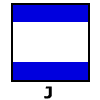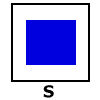P&I without the British accent



History of the P&I Clubs
The beginnings of the P&I Clubs
The P&I Clubs are remote descendants of small hull insurance Clubs formed by British shipowners in the 18th century. These hull Clubs were set up by groups of shipowners, usually drawn from a small geographic area, who were dissatisfied with the scope and cost of the hull insurance then provided by the two companies who had been granted a statutory monopoly on such business, the Royal Exchange Assurance and the London Assurance, and by individuals operating in London from, for example, Lloyd's Coffee House. These hull Clubs were essentially unincorporated associations or co-operatives of shipowners who shared with each other their hull risks, each being at the same time an insured and an insurer of others - still the basic concept of the present P&I Clubs, despite the fact that they are now incorporated so that it is the Club and not the individual Members who provide the insurance.
After the monopoly in favor of the Royal Exchange and the London Assurance was abolished in 1824, greater competition had a salutary effect on the rates, terms of cover and service offered by the commercial market and by Lloyd's underwriters. The hull Clubs became less necessary and went into decline.
Rebirth due to Growth of Third Party Liabilities
As the hull Clubs declined, however, shipowners found the need to create similar associations to cope with the steady increase of liabilities to third parties. Injured crew members had begun to seek compensation from their employers, and claims by dependents of crew members who were killed were facilitated by Lord Campbell's Act of 1846. The risks posed by passenger claims were greatly increased by the same Act and by the vast numbers of passengers who constituted the flood of emigrants to North America and Australia in the second half of the century. Shipowners were also becoming increasingly aware of the inadequacy of the insurance cover that they did have in respect of damage caused by their ships in collisions with other ships. The usual cover for claims by other ships and their cargo for damage caused in collision excluded altogether one fourth of such damage and, more seriously, was limited in amount (apparently the maximum recovery under the policy, including both damage to the insured ship and liability for the damage it had caused, was the insured value of the ship).
Eventually, in 1855, the first protection association was formed, the Shipowners' Mutual Protection Society, the predecessor of the Britannia P&I Club. It was intended to operate like a mutual hull club, but to cover liabilities for loss of life and personal injury and also the collision risks excluded from the current marine policies, particularly the excess above the limits in those policies. Other similar associations were formed.
In 1874 the risk of liability for loss of or damage to cargo carried on board the insured ship was first added to the cover provided by a protection Club. The values of cargoes had risen and cargo underwriters had become keener on recovering their losses from shipowners, in which they were encouraged by a somewhat more sympathetic approach by the courts. After 1874 many Clubs added an indemnity class to provide the necessary cover. Subsequently, most of these separate classes have been amalgamated with the class reserved for the original protection risks, and today the distinction between the two classes has virtually disappeared within the P&I Clubs.
While all the original P&I Clubs were based in various towns and cities within the United Kingdom, Clubs were subsequently established and today flourish in Scandinavia, in the United States and in Japan. The major Clubs now belong to the International Group for reinsurance and other purposes. Many Clubs originally based in the UK have been re-incorporated outside the EC (often in Bermuda) in order to secure freedom from exchange controls.
[This account has been part of the lore of the International Group of P&I Clubs for many years. It was included, for instance, in the submission of the International Group to the European Commission in June 1981, and it has been adapted for use by several Clubs in websites and other literature. Anyone wishing to read further about the origins of the P&I Clubs is referred to Steven Hazelwood, P&I Clubs Law and Practice, 3rd ed. (London: LLP, 2000), pp. 1-8; William R.A. Birch Reynardson, The History and Development of P&I Insurance: The British Scene, 43 Tulane L. Rev. 458 (1969); and The History and Development of Protecting and Indemnity Clubs, Report of Advance Study Group No. 109 of the Insurance Institute of London (N.F. Ledwith, Adviser), 1957.]
Top of Page